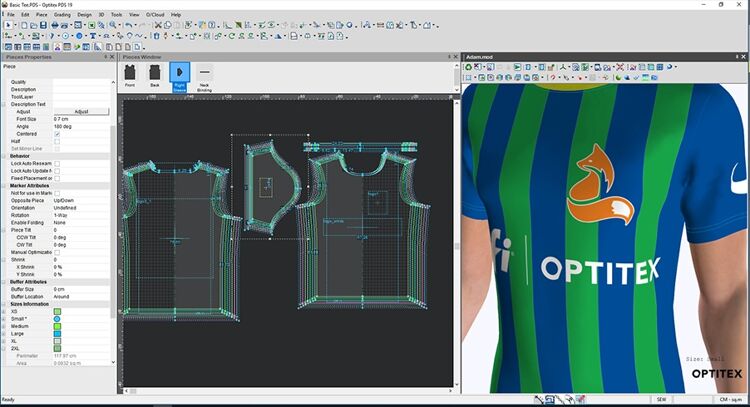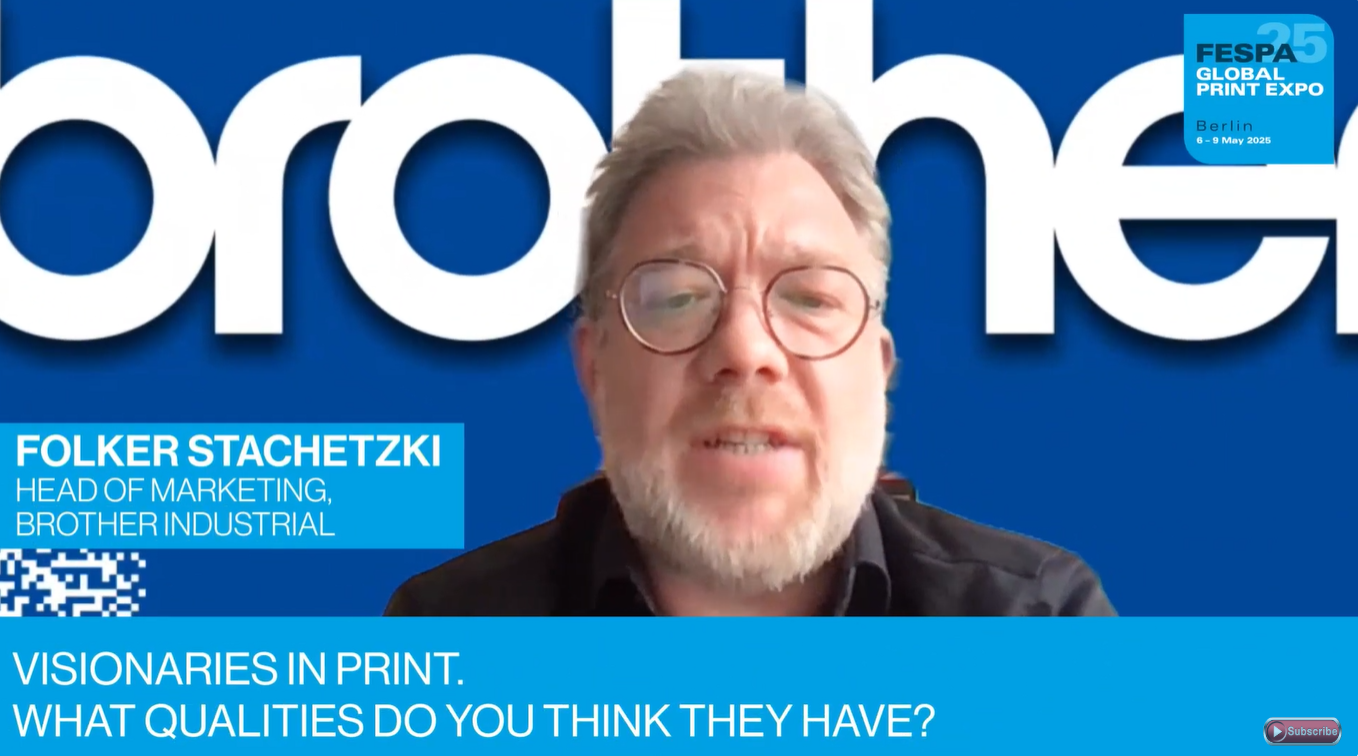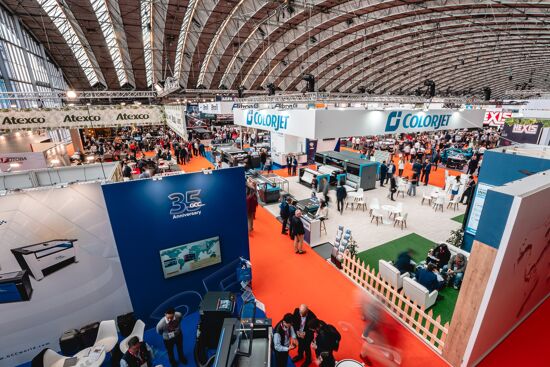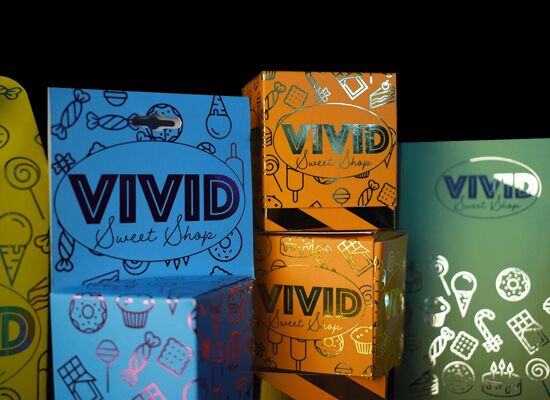What software is best suited for digitally printed textiles?

Nessan Cleary explains how textiles have specific characteristics that require specialised design software. Nessan shares the wide range of software that is designed specifically for this market.
In the last few years we’ve seen a huge rise in digitally printed textiles. But all digital printing is ultimately driven by software, both in terms of design and production workflows, and the textiles market is no different. Many standard graphic design programs, including Adobe Illustrator and CorelDraw, are widely used in textile designs. But there are a number of additional characteristics that have to be taken into account when working with printed textiles.
This includes the need for patterns to repeat in a consistent and predictable way so that all the different parts of a garment can fit together without the pattern effects clashing. There is also a need for more careful colour handling. The basics of colour management, ensuring consistent and predictable colours from screen to proof and final product, remain the same. But there is much greater use of colour sampling and textile designers will often change the colours within a pattern, perhaps to create more variety or to match with a customer’s colour scheme.
For these reasons there are a number of design programs that have been developed specifically for working with textiles. Most of these have been around for several years and include all aspects of textiles, such as knitwear and woven, but all have also added digital textile printing.
Nedgraphics, which is owned by the Fog software group, has developed a modular CAD/CAM textile design software. The different modules have been collected together into various Studio offerings for different applications such as digitally-printed fabrics, knitwear or carpets. Nedgraphics 2024 also gains a new program, Dobby Essentials, a simplified version of Dobby that is used for creating woven fabric designs.
However, all the Studios share a common core. The latest version of this, Nedgraphics 2024.1, gains a number of improvements. This includes a new layout option to show tiles of multiple designs next to each other to compare different effects. There’s also a new Colour Reduction Window for helping users find the best colour mix, and improvements to the Colour Atlas window.
 Nedgraphics 2024.1 has a new layout option to show tiles of multiple designs next to each other for comparison.
Nedgraphics 2024.1 has a new layout option to show tiles of multiple designs next to each other for comparison.
This latest version also supports the Unified 3D Material format, or U3M, which is increasingly being used for digital production of 3D objects, including garments. It can include the physical characteristics of the fabric, such as the degree of stretch or its thickness or the way it drapes, that can be picked up by online 3D viewing software to ensure that everyone in the supply chain has an accurate idea of how the final garment should look.
Nedgraphics also offers a number of plug-ins for Adobe’s Photoshop and Illustrator software. These were developed by Aquario Design, which comes from Constellation Inc, the same stable that owns Fog Software and Nedgraphics, and which has now been renamed Nedgraphics for Adobe. Most of these plug-ins are for Illustrator and strengthen areas such as repeating patterns and managing colours.
Optitex, which was briefly owned by EFI, is also now part of Fog Software and has the same management team as Nedgraphics. This summer Fog Software announced a strategic merger between the two companies as they look to expand their presence in the textile market.
Optitex offers a number of programs for different aspects of textile design and software. This includes Pattern Design Software or PDS, which lets designers create patterns and their size variants for garments in 2D but includes a 3D simulation tool that can be adjusted with the edits feeling back directly to the 2D pattern.
To complement this, there is a print-on-demand solution, Print and Cut, that arranges the garment pieces on a blank roll to optimise the best use of fabric and ink. There is also a cutting layout tool, Marker, which can automatically nest different elements together to minimise the amount of fabric left over after the pieces have been cut out. Another program, CutPlan, offers similar but over multiple sizes and orders.
There’s an online solution, O/Cloud, that allows designs to be seen in 3D and which can be accessed by everyone involved throughout a supply chain. This allows design assets and feedback to be easily shared. Optitex also has a collaboration with Adobe that allows 3D designs from Optitex to be imported into Illustrator so that designers can experiment with different textures and patterns.
AVA CAD/CAM has specialised in design and production software for textiles for MacOS. Recently the company has expanded into wall coverings and has split its software into different editions to target specific markets, such as garments and fashion. This has allowed AVA to cut prices since each edition only has the features needed for its particular target market. Earlier this year the company launched the latest version of its core software, AVA v5.9, with a number of improvements. The interface has been tidied up with new palettes and an option to automate repeated tasks. The text handling has been improved, with a new Text tool that lets users drag open a box and start typing. The Dynamic Text feature, linking text to design elements, has also been simplified. The colour handling has also been beefed up with full support for Adobe Swatch Exchange, CFX colour files including ink data for tonal breakdown as well as ICC 4.3 profiles. For output, AVA has partnered with PrintFactory to ensure that there are drivers available for most textile printers.
The French-American company Pointcarre is another company that has specialised in design software for textile use, including digital printing as well as weaving and knitting. The printing software is aimed at both rotary and digital output and includes a colour engine that can simulate the colour output from a rotary press with digital output for accurate sampling. It also includes support for repeats and for layers.
Pointcarre’s latest offering is Design Maker, which uses Artificial Intelligence to allow textile designers to describe the effects they are after to create new designs. It can also work from imported images.
 InEdit specialises in software for textile printing. ©Nessan Cleary
InEdit specialises in software for textile printing. ©Nessan Cleary
InEdit, which is now owned by EFI Reggiani, makes the Neo range of software for the textile market. It’s perhaps best known for the NeoStampa RIP, which is widely used with many digital printers. InEdit also makes several design programs. This includes NeoTextil, which is a plug-in for Adobe Photoshop that’s specifically aimed at textile designers. It has a number of different modules that together add up to a fully featured design package. Thus there is nT Step and Repeat, for setting up repeating patterns from an image. Then there is nT Masquerade for automatically creating colour separations, and nT Colorations for generating colour variants. Finally, nT Virtual Vision produces photorealistic simulations to show the designs on models or objects in any given environment.
InEdit also sells NeoMatch, for calibrating colour libraries through comparing LAB values, which can be used in conjunction with NeoStampa.
So in conclusion, there is a good range of different programs targeting the digital printed textile market. All of these are established software packages so that choosing one over another is mostly a matter of personal preference, although you should pay attention to which software fits best with your supply chain partners.
To discover the latest content that covers a wide range of sectors including software and textile printing sign up for FESPA’s free monthly newsletter FESPA World available in English, Spanish and German.
Interested in joining our community?
Enquire today about joining your local FESPA Association or FESPA Direct
Recent news
.png?width=550)
What qualities should visionaries in print have? With Folker Stachetzki from Brother
We speak to Folker Stachetzki, Head of Marketing at Brother about visionaries in print.

Bolstering personalisation by combining print and digital technology
Using printed material in combination with digital technologies offers more opportunities to those offering personalisation to customers. Rob Fletcher shares some recent examples of the print and digital working together to enhance the impact of personalised pieces.

European Sign Expo to highlight developments shaping the future of signage and visual communications
European Sign Expo 2025 (6 – 9 May, Messe Berlin, Germany) is weeks away and a host of leading exhibitors are all set to welcome Visionaries from across the signage and visual communications industries to their stands.
